Northern Vietnam, with its spectacular mountain landscapes and lush valleys, is home to a mosaic of fascinating cultures. Among these treasures, ethnic minorities play an essential role, preserving ancestral traditions and enriching the national identity with their myriad nuances. Continuing our exploration after discovering the Hmong and Dao, today we immerse ourselves in the world of five other major ethnic groups: the Tay, Muong, Thai, Nung, and Lo Lo.
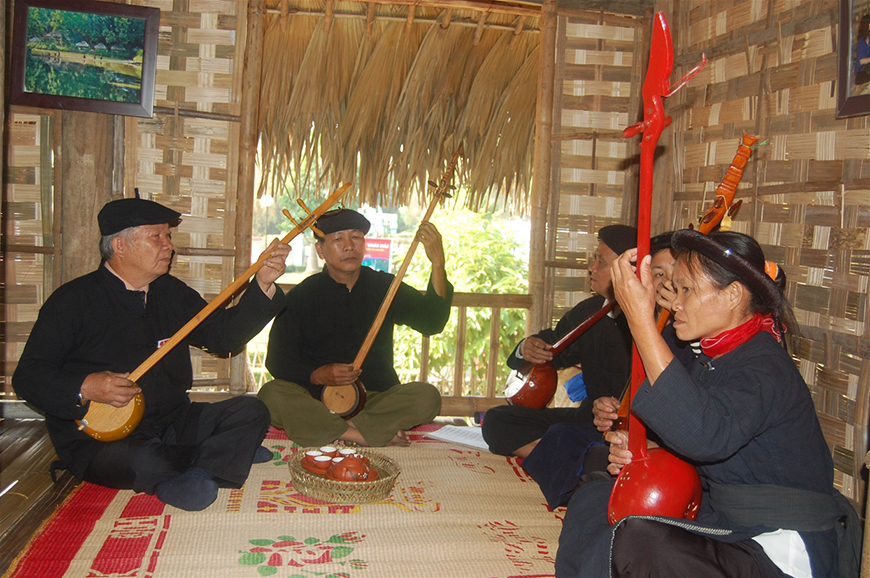
Thay people - Source : Collected
The Tay
Origin and history
The Tay constitute the largest minority group in Vietnam. They have been present in the region for millennia and are closely related to the Tai people of southern China.
Lifestyle and customs
Traditionally farmers, the Tay primarily cultivate rice in fertile valleys. Their stilt houses, called "nhà sàn," are characteristic of their architecture. Tay society is matrilineal, placing great importance on women in the family lineage.
Language and culture
The Tay language belongs to the Tai-Kadai linguistic family. Their culture is rich in folk songs, particularly the "then," a style of narrative singing accompanied by traditional instruments like the "tính tẩu" (long-necked lute).
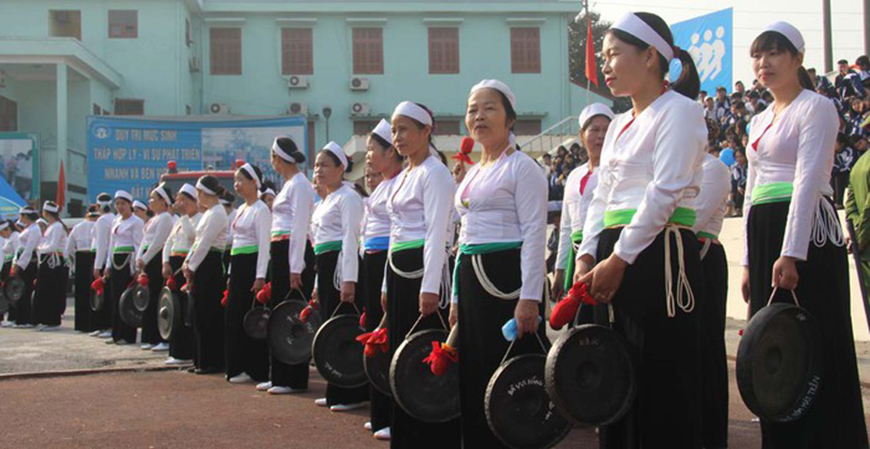
Muong people - Source : Collected
The Muong
Origin and history
The Muong are considered descendants of the inhabitants of the Red River plain before the arrival of the Viet (Kinh) people. They share many cultural similarities with the Vietnamese.
Lifestyle and customs
The Muong mainly live in stilt houses and practice subsistence agriculture. They are known for their unique social system based on the "muong," a territorial unit led by a hereditary chief.
Language and culture
The Muong language belongs to the Vietic linguistic family, closely related to Vietnamese. Their oral literature is rich, with epics like "De dat de nuoc" (The Birth of Land and Water) narrating their creation myths.
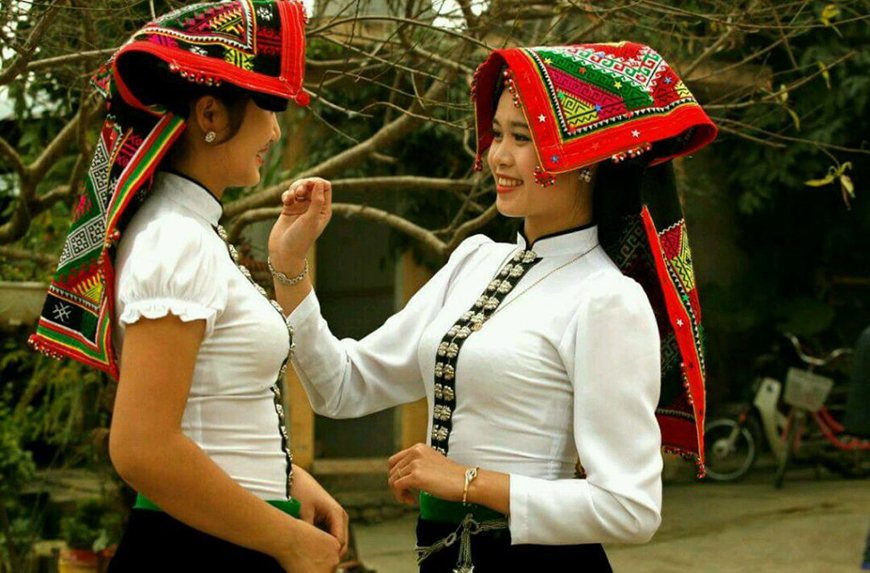
Thai ethnic women - Source : Collected
The Thai
Origin and history
The Thai arrived in Vietnam approximately 700-1000 years ago from southern China. They settled primarily in the provinces of Son La and Dien Bien.
Lifestyle and customs
The Thai are known for their sophisticated irrigation system that allows for terrace rice cultivation. Their villages are often organized around a communal house. Thai women are renowned for their skill in weaving and embroidery.
Language and culture
The Thai language also belongs to the Tai-Kadai family. Their culture is marked by numerous festivals and rituals, with the most important being "Xen Muong," a ceremony to honor the protective spirits of the village.
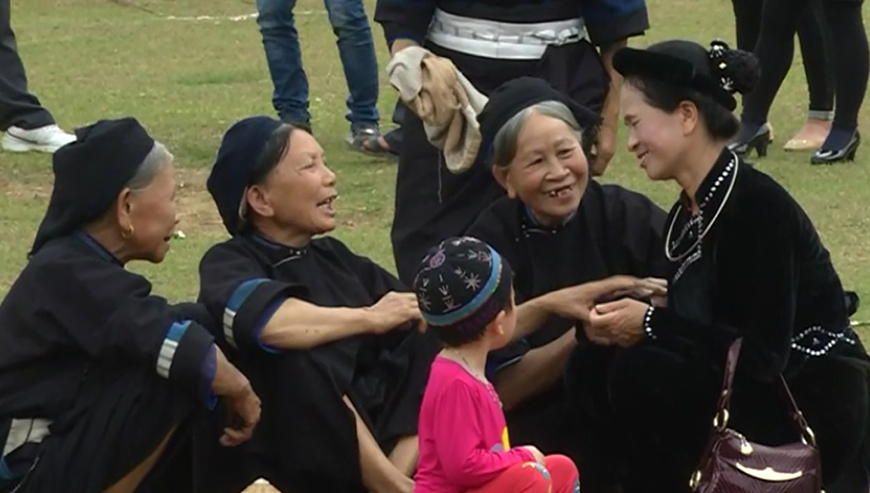
Nung people - Source : Collected
The Nung
Origin and history
The Nung originate from southern China and settled in Vietnam several centuries ago, mainly in the northern border provinces.
Lifestyle and customs
Skilled farmers, the Nung are known for their terrace cultivation techniques. They also excel in crafts, including blacksmithing and papermaking. Nung women wear distinctive clothing with bright colors and geometric patterns.
Language and culture
The Nung language belongs to the Tai-Kadai family. Their culture is influenced by Taoism and Buddhism. The Nung are renowned for their alternating chants called "sli" and traditional dances like the lion dance.
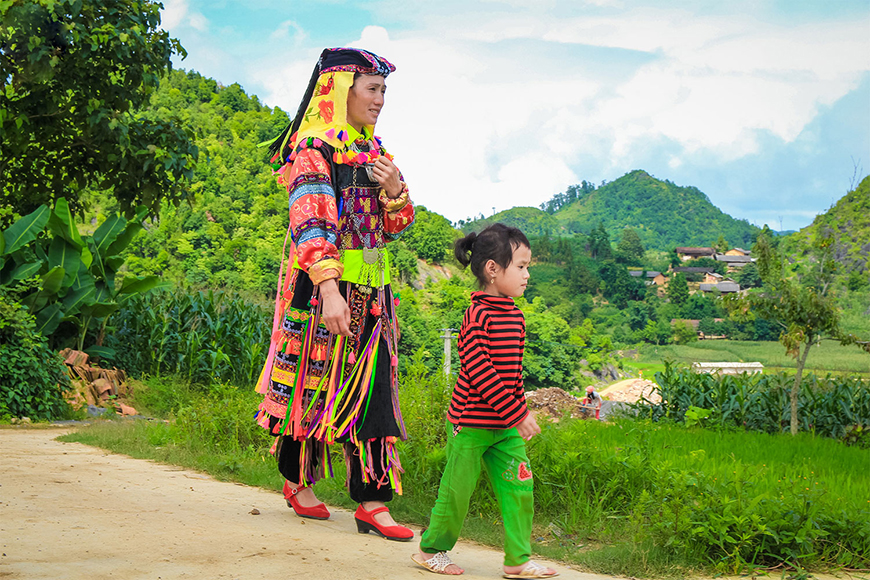
Lo Lo woman- Source : Collected
The Lo Lo
Origin and history
The Lo Lo (also known as Lô Lô) are a small ethnic group originally from Tibet. They settled in the mountainous regions of Northern Vietnam several centuries ago.
Lifestyle and customs
The Lo Lo practice shifting agriculture and animal husbandry. They are known for their colorful costumes, especially the elaborate headdresses worn by women. Lo Lo society is patriarchal and follows a clan system.
Language and culture
The Lo Lo language belongs to the Sino-Tibetan linguistic family. Their culture is rich in oral traditions, with numerous tales and legends passed down through generations. They celebrate the Lunar New Year with unique traditional dances and games.
These ethnic groups, among others, contribute to the cultural richness of Northern Vietnam. Despite the challenges of modernization, they strive to preserve their traditions and heritage.
► Would you like to meet these local communities? Our off-the-beaten-track tours will take you there!